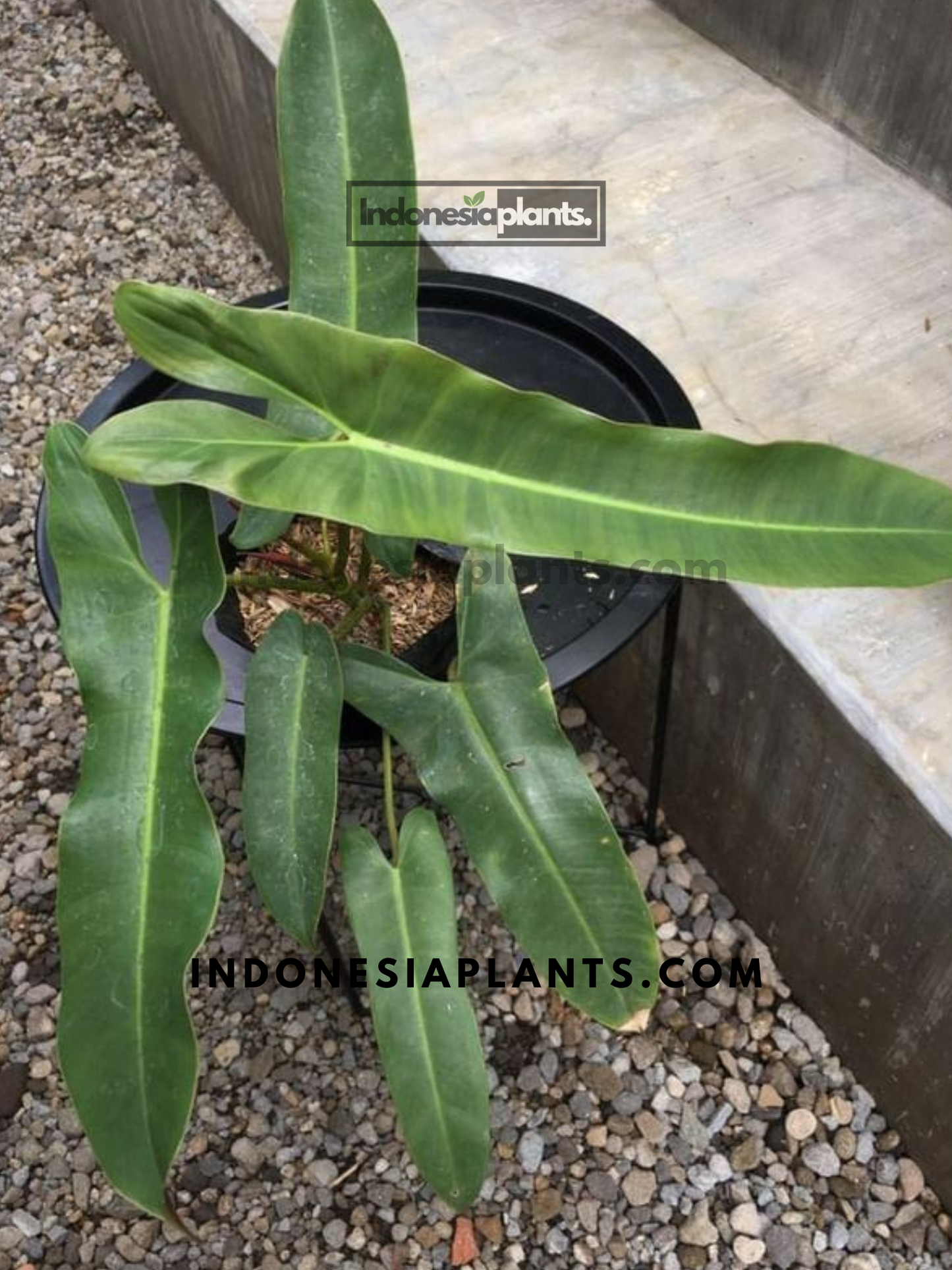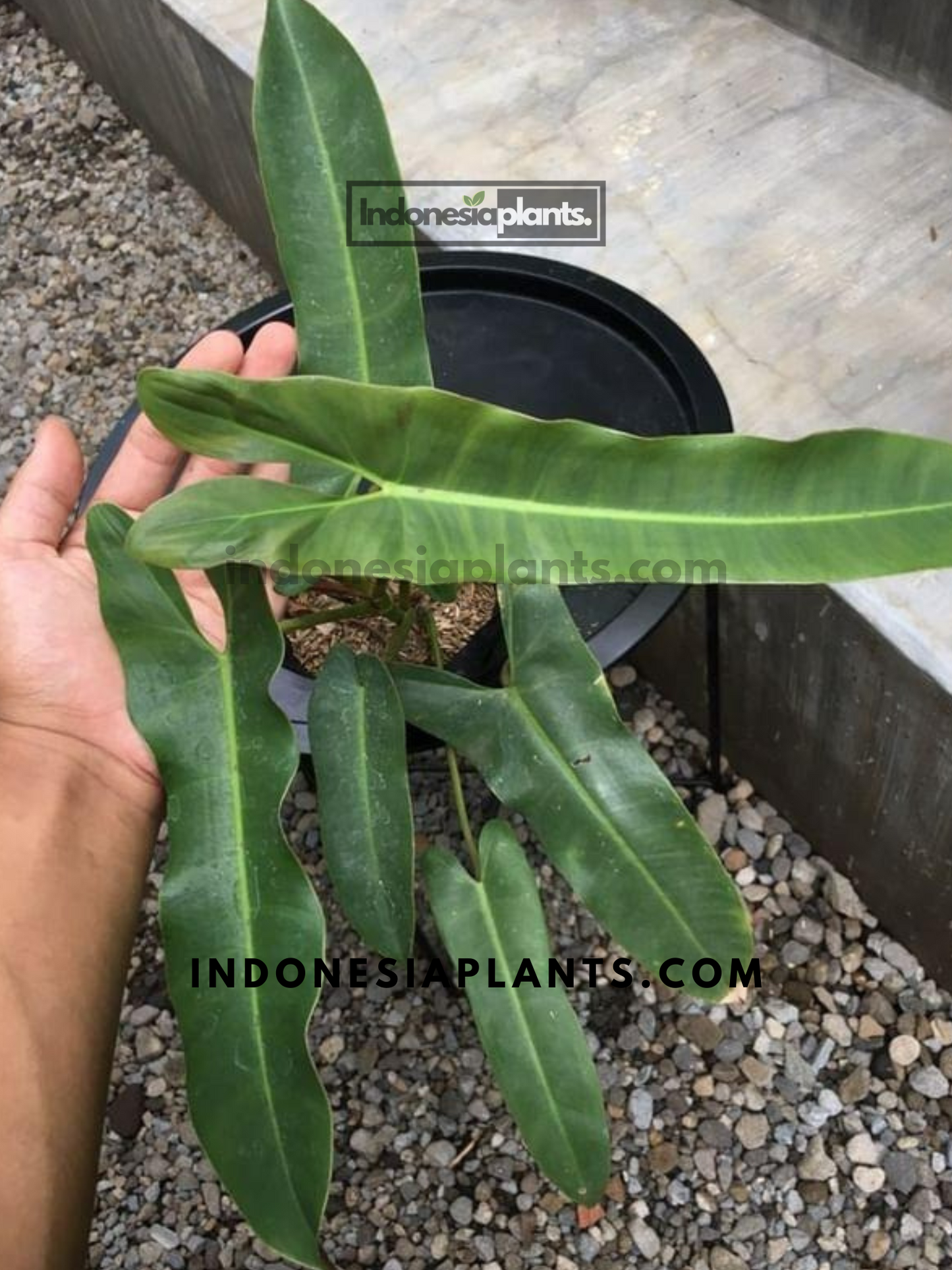indonesiaplants
Philodendron Atabapoense
Philodendron Atabapoense
Couldn't load pickup availability
See photos for reference of the plant features only. Sent to you more likely as featured with descriptions below:
Minimum of 3 leaves
Rooted not cuttings
Philodendron Atabapoense – Exotic Climber with Stunning Burgundy Undersides
A rare and elegant South American beauty, the Philodendron Atabapoense is highly desired for its lance-shaped, deep green leaves with striking burgundy undersides. This fast-growing climber thrives on a moss pole, creating a mesmerizing vertical garden display. Its unique leaf shape, two-tone contrast, and ease of care make it a favorite among plant collectors.
What Makes Philodendron Atabapoense Special?
- Rich Green & Burgundy Foliage – The stunning dual-tone effect adds contrast and depth.
- Fast-Growing Climber – Ideal for moss poles, hanging baskets, or trellises.
- Air-Purifying & Low Maintenance – Improves air quality while being adaptable and forgiving.
- Exotic Appeal – A showstopper that brings tropical rainforest vibes to any home.
Weekly — Core Rhythm
Establish a calm loop that repeats. Place Philodendron atabapoense where light is bright yet softened—an east window glow or a luminous space behind sheers. Perform a finger-test every 3–4 days: when the top 2–3 cm (about an inch) of mix feels dry, water thoroughly until runoff, then let excess drain completely. Wipe one or two leaves with a soft cloth to keep the satin surface clean; this species has long, elegant blades (deep green on top, rich burgundy beneath) that photograph best when dust-free. Check the tie points on your moss pole or coco totem so the vine stays aligned and the internodes remain tight. Peek for pests during this pass—consistent, gentle surveillance beats crisis control.
Biweekly — Nutrition & Ties
Every two weeks in active seasons, feed lightly at ¼–½ strength with a balanced aroid fertilizer. This supports steady elongation and color fidelity without pushing floppy growth. Reassess support: add a tie just below the newest node and keep the main leader within a couple of centimeters of the pole so the plant climbs rather than leans. If your room runs dry, group plants or position a small humidifier nearby; atabapoense rewards a comfortable band around ~55–70% RH with smoother unfurls and fewer edge ripples.
Monthly — Rotation, Grooming, Pot Check
Quarter-turn the planter for even exposure and symmetric leaf orientation. Trim spent sheaths and any wayward runner to maintain a clean, sculptural column. Lift the pot to gauge mass: noticeably lighter between waterings is normal; consistently heavy suggests a mix that’s holding too much moisture. Refresh the top layer with a handful of chunky bark if compaction begins. Inspect aerial roots; encourage them toward the support or tuck gently into the mix to stabilize the canopy.
Season Shift — Adjustments That Matter
- More heat & light (spring/summer): Expect faster uptake. Keep your watering cadence steady but remain disciplined with drainage. A touch more brightness (still filtered) enlarges blades and deepens the green/burgundy contrast.
- Lower light & cooler rooms (autumn/winter): Lengthen the interval between waterings. Halve fertilizer frequency. Move the plant slightly closer to the brightest safe zone to prevent stretched internodes. Avoid cold drafts; the long blades can bruise at edges in turbulent air.
- Repot window: When roots fill the vessel or the mix collapses, step up one size only. Use an oxygen-forward aroid blend—chunky orchid bark, coco fiber/coir, pumice or perlite, plus a modest sphagnum buffer—so the root zone stays airy while moisture remains even.
Troubleshooting Mini-Chart
- Leaves narrow, internodes long: Increase overall luminance (diffused). Ensure the leader is fixed tightly to the support.
- Brown, papery edges: Either low humidity or late watering; tighten cadence and consider a humidity bump.
- Yellowing from the base upward: Overwatering or dense mix; let the medium dry to the proper trigger and increase bark/pumice fraction.
- Color dull on new leaves: Check nutrition (resume light feed) and confirm the top growth is living in your brightest safe pocket.
Design Notes
Celebrate the two-tone drama: deep green adaxial, burgundy abaxial. Side-light the column so the red undersides “flash” when leaves sway. Pair with matte stone or charcoal planters for a gallery-clean vignette; contrast with rounder foliage to spotlight atabapoense’s long, sculptural blades.
Kindly reach out to us at indonesiaplants@gmail.com if you have difficulties in your purchase or have any questions.







